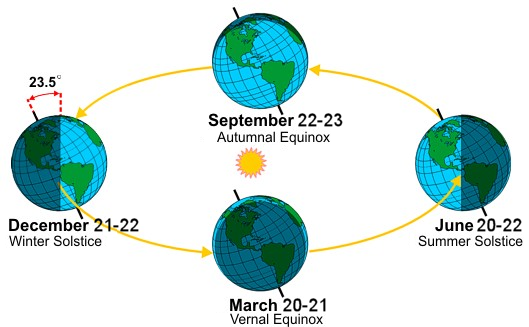Blog

#bioPGH Blog: Summer Solstice
 A resource of Biophilia: Pittsburgh, #bioPGH is a weekly blog and social media series that aims to encourage both children and adults to reconnect with nature and enjoy what each of our distinctive seasons has to offer.
A resource of Biophilia: Pittsburgh, #bioPGH is a weekly blog and social media series that aims to encourage both children and adults to reconnect with nature and enjoy what each of our distinctive seasons has to offer.
It's the longest day of the year! Tomorrow morning, the sun will rise at 5:49 a.m. and set at 8:53 p.m., giving us a glorious fifteen hours, three minutes, and fifty seconds of daylight. It’s the summer solstice! Let’s take a deeper dive into the day, beyond the extended sunlight!
We call it a “solstice” when the Earth is angled at its most northerly or southerly position during its orbit around the sun. If you’ll recall from our chat about the spring equinox, our seasons on Earth are the result of the planet’s tilt on its rotational axis. As we travel around the sun, the Earth is tilted 23.5 degrees. What exactly does this mean? Well, picture that an imaginary line runs from top to bottom through the center of the Earth, connecting our North and South Pole. Now, imagine that this pole-pole line is perpendicular to the Earth’s path in its orbit around the sun — this would be our planet with no axial tilt. However, our tilted axis means that our imaginary line connecting the north and south poles is angled by 23.5 degrees.

National Weather Service
Now that we have the Earth’s tilt in mind, we can look more closely at the solstice. As the Earth progresses in its elliptical orbit around the sun (and remember, the complete orbit takes one year!), this axial tilt keeps the Northern Hemisphere closer to the sun than the Southern Hemisphere for part of the year, and farther from the sun the rest of the year. On June 20, at approximately 10:42 p.m. this year, the Northern Hemisphere will be at its closest possible angle to the sun, kicking off summer and giving us the longest amount of daylight for the year. And the reverse is true for the Southern Hemisphere, as they are as close as possible to the sun. (The solstice is at slightly different days and times each year because it technically takes our planet 365.24 days to orbit the sun.) We both mark this as the official change in seasons. Our days in the Northern Hemisphere will grow shorter and in the Southern Hemisphere, days will grow longer. To visualize it, here is a video below from NASA:
NASA Scientific Visualization Studio, Summer Solstice
If we take a step back and think about it, that little tilt of the planet has a pretty big impact. It drives our seasons, our daily amount of sunlight, our circadian rhythms, and many other things related to those concepts. It’s no wonder that cultures and civilizations from around the world and across history have faithfully observed the solstices and equinoxes. These events were followed by a change in season that would have a tremendous impact on the experience and even survivability of the days ahead! Today, we in Pittsburgh can note the solstice perhaps without the same level of concern, but perhaps we can also take away that just a little bit of change can make a big difference – whether we’re talking about a tilting planet, climate action, or sharing joy and support in your neighborhood.
Images: Pexels, CCO

